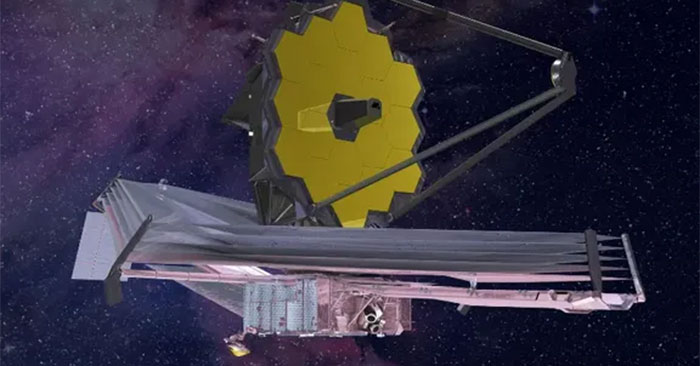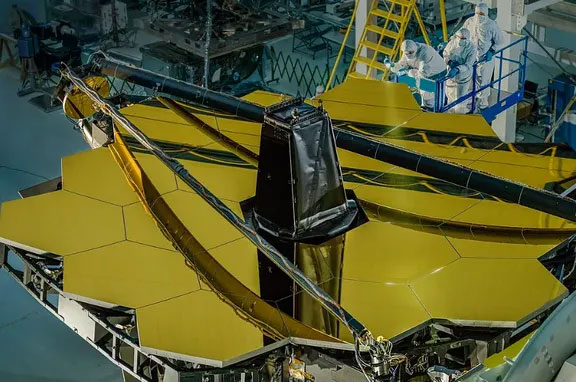Why NASA Gold-Plated the Mirrors of the $10 Billion James Webb Telescope
The James Webb Space Telescope is the largest and most powerful instrument ever launched into space. One of the most striking components of the $10 billion telescope is its giant primary mirror, which is coated in a shimmering gold coating. The 6.5-meter-long mirror is made up of 18 hexagonal mirrors.

To help the mirrors on telescopes reflect as much light as possible, they are often coated with metals. Depending on the type of light the telescope is looking at, scientists will choose the appropriate metal. And gold was chosen to plate James Webb.
The first reason is because telescopes observe infrared rays, a type of light emitted from deep space. And according to the ranking of infrared light reflectivity, gold ranks first with 99%, silver is in second place with 95% and third is aluminum with 5%.
Gold is one of the least reactive metals. This means that it is very durable and does not oxidize or degrade in space. Silver and aluminum, in addition to being poor reflectors of infrared rays, also tarnish easily and are not as durable as gold.
Therefore, scientists chose to coat the mirror with a layer of gold to maximize the reflective properties of the metal.

This coating process is called 'vacuum vapor deposition', which means the mirrors are placed inside a vacuum chamber, where a small amount of gold evaporates and is deposited on the mirror surface.
This method achieves an ultra-thin plating. It takes about five gold men's wedding rings to cover 18 of James Webb's hexagonal mirrors.
- Admire impressive space photos from the $10 billion telescope
You should read it
- Admire the 'very different' image of Saturn under the eyes of the Hubble telescope
- James Webb telescope captures stunning cosmic hourglass moment
- The Most Powerful Space Telescope Ever Built Will Look Back In Time To The Dark Ages Of The Universe
- Admire the stunning view of the Sombrero Galaxy through the eyes of the James Webb Space Telescope
- Admire the majestic spectacle of swirls of dust and gas in nearby galaxies
- Admire the colorful moment of a star in the making
 5 ways to remove elephant glue stuck to skin
5 ways to remove elephant glue stuck to skin NotebookLM's latest feature allows creating videos from notes
NotebookLM's latest feature allows creating videos from notes Unique Soul Index Meaning of Master Number 11 in Numerology
Unique Soul Index Meaning of Master Number 11 in Numerology Levi's CEO hasn't washed jeans in 10 years, so how often should you wash jeans?
Levi's CEO hasn't washed jeans in 10 years, so how often should you wash jeans? 3 AI Playlist Generators That Work Much Better Than Spotify
3 AI Playlist Generators That Work Much Better Than Spotify How to check BIOS version in Windows 11
How to check BIOS version in Windows 11